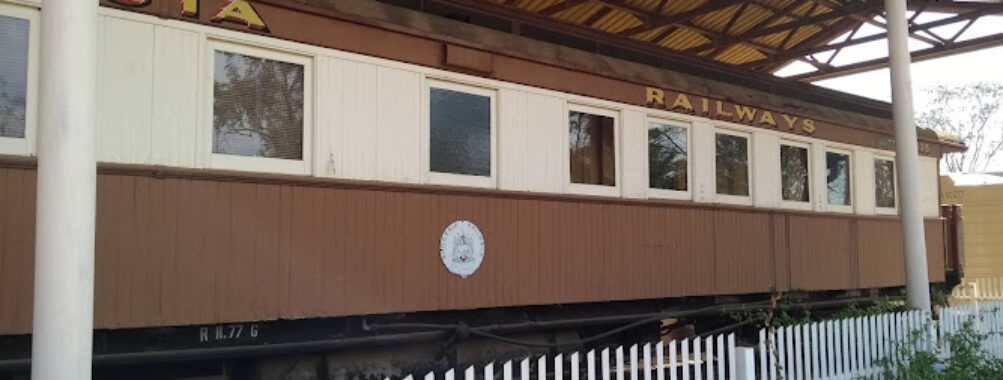
National Museum & Art Gallery
“`html
Table of Contents
Description
The National Museum & Art Gallery in Gaborone is one of those places that quietly sneaks up on you. You walk in expecting a small local museum, maybe a few displays about Botswana’s history, and then—bam—you’re surrounded by an unexpectedly rich collection that tells the story of a nation through art, culture, and memory. It’s not a flashy place, but that’s part of its charm. There’s a calm, almost meditative atmosphere that makes you slow down and actually look at things, not just glance and move on.
Inside, the museum’s galleries unfold like chapters in a well-loved book. Traditional crafts, archaeological finds, and contemporary artworks share space in a way that feels natural, as if the past and present are in conversation. I remember standing in front of a painting that depicted village life under a wide, dusty sky—it reminded me of my own childhood visits to rural areas where time seemed to stretch endlessly. That’s what this museum does best: it connects you to Botswana’s soul without trying too hard.
Of course, not everything is perfect. Some exhibits could use a refresh, and the lighting in certain corners feels a bit dated. But honestly, that’s part of the experience—it’s authentic, not overly polished. And when you step outside, the thatched-roof houses scattered around the complex offer a tangible link to traditional architecture. It’s like walking through a living story, one that continues to evolve with every visitor who steps through its doors.
Key Features
- Showcases both traditional and modern Botswanan art, from intricate basketry to bold contemporary paintings.
- Outdoor exhibits include reconstructed thatched-roof houses that reflect local architectural heritage.
- Rotating exhibitions highlight emerging artists and cultural themes from across southern Africa.
- On-site restaurant serving local dishes—perfect for a mid-visit break.
- Fully wheelchair accessible, with ramps, accessible restrooms, and designated parking.
- Family-friendly facilities, including restrooms with changing tables for young children.
- Guided tours available for groups, offering deeper insights into Botswana’s cultural evolution.
I’ve always believed that a good museum doesn’t just show you objects—it helps you feel the heartbeat behind them. The National Museum & Art Gallery does exactly that. Whether it’s a carved wooden mask or a modern sculpture, every piece seems to whisper a story if you’re patient enough to listen.
Best Time to Visit
If you’re planning a trip, the cooler months from May to August are ideal. The weather in Gaborone is mild, making it comfortable to explore both the indoor galleries and the outdoor exhibits without breaking a sweat. Weekdays are generally quieter, which means you can take your time wandering through the exhibits without the buzz of weekend crowds.
That said, there’s something special about visiting during local festivals or cultural events—sometimes the museum hosts workshops or temporary exhibitions that add a lively twist to the usual displays. I once stumbled upon a small art fair in the courtyard, where local artists painted live and chatted with visitors. It turned a regular museum visit into an unexpectedly personal experience.
How to Get There
Getting to the museum is straightforward if you’re staying in Gaborone. Most travelers opt for taxis or ride-hailing apps, which are fairly reliable and affordable. If you prefer a bit of adventure, you can also hop on one of the local minibuses—though be prepared for a slightly chaotic but authentic experience.
For those driving themselves, parking is available and conveniently close to the entrance. The area around the museum is safe and easy to navigate, so you can pair your visit with a stroll to nearby cafés or markets afterward. I’d suggest setting aside at least two hours for your visit; it’s surprising how quickly time slips away once you start exploring.
Tips for Visiting
Here are a few things I’ve learned from my own visits (and from chatting with other travelers over coffee afterwards):
- Bring a camera – Photography is usually allowed in most sections, and the outdoor displays are particularly photogenic.
- Ask questions – The staff here are genuinely passionate and love sharing stories about the exhibits. Don’t be shy.
- Take your time – This isn’t a museum you rush through. Sit down, read the exhibit notes, and let the atmosphere sink in.
- Check for temporary exhibitions – The museum often rotates displays, so you might catch something truly unique.
- Visit the gift shop – It’s small but filled with locally made crafts and art prints that make thoughtful souvenirs.
- Stay hydrated – Even though much of the museum is indoors, Gaborone’s dry climate can sneak up on you.
And one more thing—don’t skip the outdoor section. Many visitors head straight for the art galleries and forget about the traditional huts and garden area outside. That’s where you’ll really feel the connection between history and the present day. I remember sitting on a bench there, listening to the quiet hum of the city in the distance, and thinking how every country has its own way of telling its story. Botswana tells hers here—with honesty, warmth, and a quiet dignity that stays with you long after you leave.
So, if you’re the kind of traveler who loves stories, art, and a bit of reflection, the National Museum & Art Gallery deserves a spot on your itinerary. It’s not just a building filled with artifacts—it’s a living, breathing record of a nation’s journey. And honestly, that’s what makes it worth every minute you spend there.
“`
Location
Places to Stay Near National Museum & Art Gallery
Find and Book a Tour
Explore More Travel Guides
No reviews found! Be the first to review!